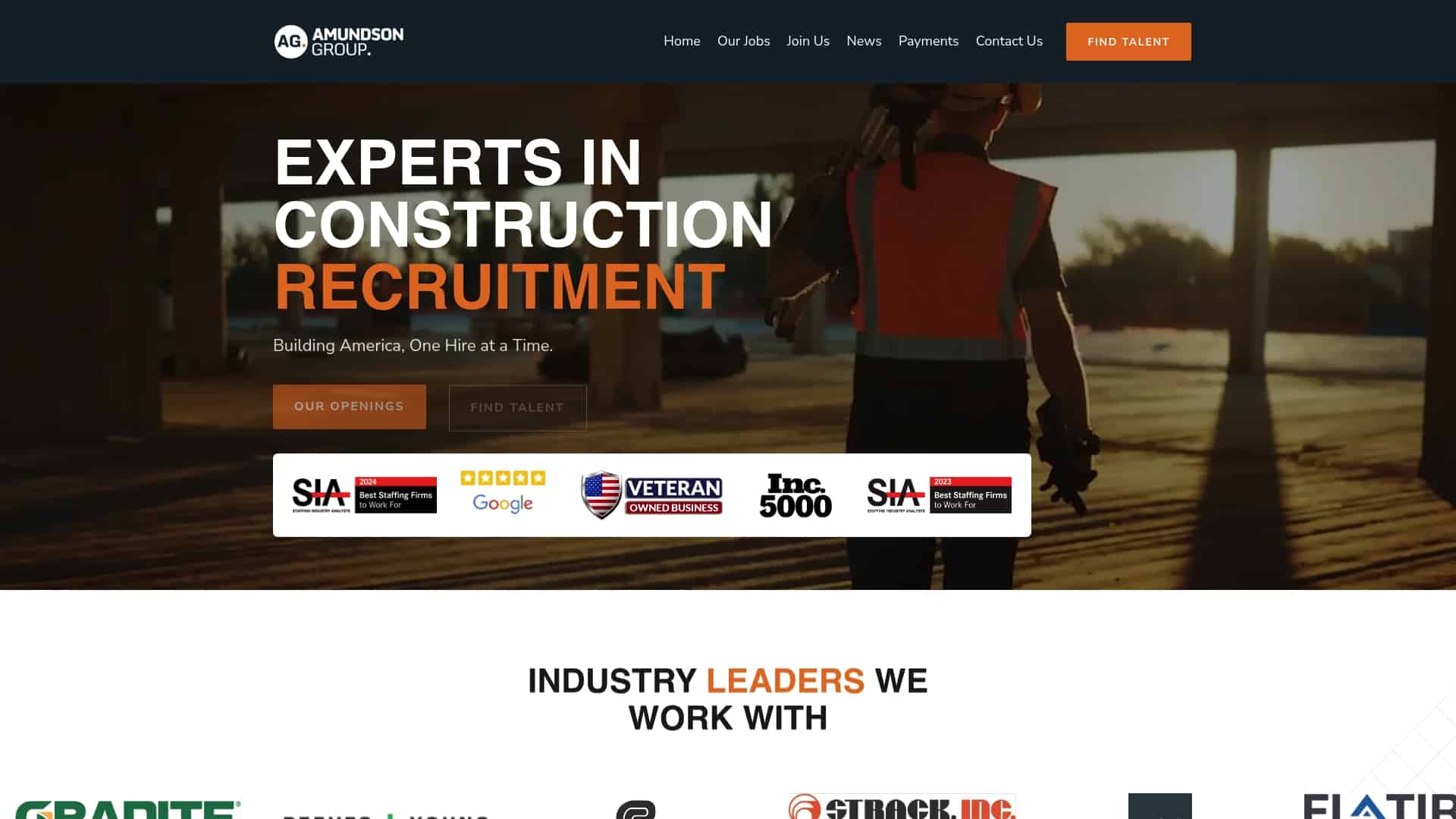Talent retention is the secret sauce behind business growth—proven strategies can reduce turnover while boosting morale and productivity. Yet, here’s the kicker: many companies overlook the true power of keeping their employees happy. Rather than just cutting costs, the aim should be creating a work environment that thrives on stability and passion. When you prioritize retaining talent, you unlock a wealth of benefits that can propel your business forward in ways you never imagined.
Understanding Talent Retention Benefits
In today’s competitive business landscape, talent retention has emerged as a critical factor in driving sustainable growth. When employees stay with your organization longer, the benefits extend far beyond simply reducing turnover rates. A comprehensive talent retention strategy creates cascading positive effects throughout your entire business ecosystem.
Financial Impact of Employee Retention
The financial case for prioritizing talent retention is compelling. According to research from ClearCompany, replacing a single employee can cost up to $20,000 for a $60,000 salary position, with the hiring process taking between 33-49 days. These costs add up quickly when you consider the recruitment expenses, training resources, and productivity losses during transition periods.
When you successfully retain your workforce, you redirect these potential expenses toward growth initiatives instead. The savings generated through effective employee retention practices can be substantial enough to fund new projects, improve existing processes, or invest in additional talent development—creating a virtuous cycle of organizational improvement.
Beyond direct cost savings, retained employees contribute more meaningfully to your bottom line. They’ve mastered their roles, understand company processes, and can operate at peak efficiency without the learning curve newer staff face. This institutional knowledge becomes increasingly valuable over time, particularly in complex industries where expertise develops gradually.
Enhanced Organizational Performance Through Staff Retention
Talent retention directly influences your organization’s overall performance in several key areas. Experienced employees maintain strong client relationships, preserve critical institutional knowledge, and contribute to a stable company culture—all essential components for business growth.

Workforce retention strategies that keep your high performers engaged lead to better teamwork dynamics. Teams with consistent membership develop stronger communication patterns and collaborative workflows that would otherwise be disrupted by frequent turnover. These established teams can tackle complex challenges more effectively and drive innovation through their collective experience.
The ripple effects extend to customer experiences as well. When clients consistently interact with the same knowledgeable staff members, they develop trust and loyalty that translates to higher satisfaction rates and repeat business. This consistency in customer-facing roles provides a competitive advantage that’s difficult for competitors with high turnover to replicate.
Creating a Positive Retention Cycle
Perhaps most importantly, successful talent retention creates a self-reinforcing positive cycle. When employees observe that their colleagues choose to stay with the organization long-term, it signals stability and opportunity, making them more likely to commit to their own future with the company.
Organizations with strong retention records typically find it easier to attract new talent as well. Prospective employees recognize that low turnover rates indicate a healthy workplace culture and growth opportunities. This reputation as an employer of choice gives you access to higher-quality candidates when you do need to hire.
The benefits of talent retention extend throughout your entire organization—from financial performance to operational efficiency, from customer satisfaction to recruitment advantages. By viewing employee retention as a strategic business priority rather than simply an HR function, you position your company for sustainable growth in both the short and long term.
Key Takeaways
| Takeaway | Explanation |
|---|---|
| Talent Retention Drives Growth | Prioritizing employee retention not only reduces turnover costs but also reallocates resources towards growth initiatives, enhancing overall organizational performance. |
| Create a Culture of Recognition | Implementing robust recognition systems and clear growth opportunities increases employee commitment and satisfaction, reducing the likelihood of turnover. |
| Prioritize Employee Wellbeing | Organizations that provide flexibility, support mental health, and foster work-life balance see significantly higher retention rates as employees feel valued and cared for. |
| Measure Retention Metrics | Establishing measurement systems to track retention rates, voluntary turnover, and employee engagement helps identify trends and formulate effective retention strategies. |
| Personalize Employee Experiences | Tailoring career development and benefits packages to individual employee needs fosters loyalty and commitment, creating a workforce that is invested in the company’s success. |
Building Effective Retention Strategies
Once you recognize the substantial benefits of talent retention, the next step is developing strategies that effectively keep your valuable employees engaged and committed to your organization. Implementing thoughtful workforce retention strategies requires a multifaceted approach that addresses various aspects of the employee experience.
Creating a Culture of Recognition and Growth
Employees who feel valued and see clear paths for advancement are significantly more likely to stay with your organization. Developing a robust recognition system acknowledges contributions both large and small, reinforcing that each team member’s work matters. This might include formal recognition programs, peer-to-peer appreciation initiatives, or simply ensuring managers regularly communicate genuine appreciation for specific accomplishments.
Equally important is providing clear growth opportunities. According to research from Appcues, organizations that invest in professional development see substantial improvements in retention rates. When employees can envision their future within your company, they’re less likely to look elsewhere. Create transparent career pathways that outline potential advancement routes, and pair these with relevant training and mentorship opportunities.
Proactive talent retention efforts should also include regular career development conversations. These discussions help align employee aspirations with organizational needs, creating win-win scenarios where growth benefits both the individual and the company. Managers should be trained to facilitate these conversations effectively, focusing on both short-term goals and long-term career vision.
Optimizing Compensation and Benefits Packages
While culture and growth opportunities are crucial, competitive compensation remains a fundamental aspect of any retention strategy. Regularly benchmark your salary offerings against industry standards to ensure you’re not losing talent simply because competitors pay more. Remember that compensation extends beyond base salary to include bonuses, profit-sharing, equity, and other financial incentives that can differentiate your offering.
Beyond direct compensation, your benefits package plays an increasingly important role in talent retention. Modern employees value flexibility, work-life balance, and benefits tailored to their specific life situations. Consider implementing flexible work arrangements, generous paid time off policies, wellness programs, and family-friendly benefits that address diverse employee needs.

Staff retention often comes down to creating the right mix of financial and non-financial rewards that make employees feel their overall compensation package reflects their value to the organization. Regular reviews of your total rewards strategy help ensure you’re addressing changing employee priorities and market conditions.
Fostering Meaningful Engagement and Communication
Employee engagement serves as a powerful predictor of retention. Engaged employees who feel connected to your organization’s mission and values develop stronger loyalty that transcends minor dissatisfactions or competitive offers. Build this connection by clearly communicating your company’s purpose and demonstrating how each role contributes to larger organizational goals.
Open, transparent communication builds trust that strengthens retention. Create multiple channels for two-way communication, including regular team meetings, one-on-one check-ins, anonymous feedback mechanisms, and open-door policies from leadership. When employees feel heard and see their input driving positive changes, their commitment to the organization deepens.
Perhaps most critically, retention strategies must include efforts to build strong relationships between employees and their direct managers. Research consistently shows that people often leave managers rather than companies. Invest in developing people-management skills throughout your leadership ranks, focusing on emotional intelligence, effective feedback techniques, and individualized management approaches.
Effective talent retention requires thoughtful strategy rather than reactive responses to resignations. By creating a comprehensive approach that addresses recognition, growth, compensation, and engagement, you build an environment where employees choose to stay and contribute their best work—driving your business growth through stability, expertise, and commitment.
Enhancing Work Culture for Retention
While competitive compensation and growth opportunities are essential components of talent retention, your organization’s workplace culture often becomes the decisive factor in whether employees stay for the long term. A positive, supportive work environment creates emotional connections that transcend transactional employment relationships and fosters genuine loyalty among your workforce.
Building Trust Through Transparency and Inclusion
Trust forms the foundation of a retention-focused culture. When employees trust leadership, they’re more likely to weather organizational challenges and remain committed during difficult times. Developing this trust requires consistent transparency about company decisions, challenges, and future directions. Regular town halls, honest communications about business performance, and clear explanations behind major decisions all contribute to an atmosphere of openness that builds confidence in leadership.
Inclusion plays an equally critical role in developing a retention-friendly culture. According to research from Humu, employees who feel they belong in their workplace are significantly more likely to remain with their organization long-term. Create an inclusive environment by ensuring diverse perspectives are valued in decision-making processes, establishing employee resource groups, and addressing unconscious bias through training and policy reviews.
Ensure your organizational values aren’t just wall decorations but living principles that guide daily operations and decisions. When employees see consistency between stated values and actual behaviors—particularly from leadership—it reinforces the authenticity of your culture and strengthens their connection to the organization.
Prioritizing Work-Life Balance and Wellbeing
Modern employees increasingly prioritize work environments that respect their lives outside the office. Organizations that demonstrate genuine concern for employee wellbeing experience substantially higher retention rates than those focusing exclusively on productivity metrics. This means creating policies that support reasonable workloads, discourage after-hours communications, and provide flexibility for personal obligations.
Mental health support has become particularly crucial for workforce retention strategies. Consider implementing comprehensive wellness programs that include mental health resources, stress management workshops, and adequate time off for rejuvenation. When employees feel supported during personal challenges, their loyalty to the organization deepens significantly.
Flexible work arrangements have evolved from perks to expectations. Whether through remote work options, flexible scheduling, or compressed workweeks, providing employees with autonomy over how and when they work demonstrates respect for their individual circumstances and needs. This flexibility often outweighs modest salary differences when employees make staying-or-leaving decisions.
Fostering Connection and Community
Human connection remains a powerful retention tool that competitors cannot easily replicate. Create opportunities for meaningful relationships to develop within your organization through team-building activities, cross-departmental projects, and social events that bring people together authentically. These connections often become the emotional anchors that keep employees engaged during challenging periods.
Establish traditions and rituals that reinforce your cultural identity and create shared experiences. Whether celebrating work anniversaries, recognizing achievements in unique ways, or creating company-specific traditions, these practices differentiate your workplace and strengthen employees’ sense of belonging to something special.
Encourage healthy collaboration over competition within your organization. Teams that support each other’s success rather than competing for limited recognition create environments where people want to remain. This might involve revising incentive structures to reward collaborative achievements, recognizing contributions to others’ success, and highlighting teamwork as a core value.
Your workplace culture represents one of your most powerful talent retention tools. By intentionally developing an environment where trust flourishes, wellbeing is prioritized, and meaningful connections form naturally, you create a workplace that employees find difficult to leave—even when presented with attractive alternatives. The investment in culture pays dividends through improved retention rates, enhanced productivity, and a workforce that genuinely advocates for your organization in the broader marketplace.
Measuring Talent Retention Performance
Effective talent retention strategies require more than intuition—they demand data-driven insights to guide decision-making and demonstrate return on investment. By establishing robust measurement systems, you can identify retention trends, anticipate potential issues, and quantify the business impact of your retention initiatives.
Key Retention Metrics to Track
Starting with foundational metrics gives you baseline measurements to evaluate your retention performance. The most basic yet essential metric is your employee retention rate, calculated by dividing the number of employees who remained during a specific period by the total number of employees at the start of that period, then multiplying by 100. This provides a straightforward percentage that tracks overall retention success.
Equally important is monitoring your voluntary turnover rate—the percentage of employees who choose to leave your organization rather than those who depart through termination or retirement. According to research from Wellhub, the costs associated with replacing an employee can reach three to four times their annual salary when considering recruitment, onboarding, and productivity losses. This makes voluntary turnover particularly important to track and address.
Look beyond organization-wide metrics to analyze retention patterns across different segments—departments, roles, tenure lengths, demographics, and performance levels. These segmented insights often reveal specific areas requiring intervention. For instance, if high-performing employees are leaving at higher rates than average performers, this suggests your retention strategies may not adequately address the needs of your top talent.
Implementing Retention Measurement Systems
Effective measurement requires systematic data collection through multiple channels. Regular employee engagement surveys provide quantitative insights into satisfaction levels, while stay interviews with current employees reveal what keeps them committed to your organization. These proactive conversations often uncover retention factors you might otherwise miss.
Exit interviews and surveys with departing employees offer crucial feedback about why people leave. Design these to elicit honest responses by ensuring confidentiality and using neutral third parties when possible. The patterns that emerge from exit data highlight specific retention issues requiring attention.
Advanced organizations implement predictive analytics to identify retention risks before employees decide to leave. By analyzing patterns in engagement scores, performance changes, compensation relative to market rates, and other variables, you can develop early warning systems that flag retention risks, allowing for proactive intervention.
Connecting Retention to Business Outcomes
To secure continued investment in retention initiatives, demonstrate clear connections between retention metrics and business performance. Calculate the financial impact of turnover by tracking costs associated with recruitment, onboarding, temporary coverage, and productivity losses during transitions. When these figures are presented alongside retention metrics, the business case for retention investments becomes compelling.
Monitor how retention rates correlate with key performance indicators like customer satisfaction, productivity, and quality metrics. Teams with higher stability typically outperform those experiencing frequent turnover. These correlations help quantify the operational benefits of strong retention.
Track the effectiveness of specific retention initiatives by measuring before-and-after retention rates in targeted groups. This helps identify which strategies deliver the strongest return on investment and informs future retention planning.
Create executive dashboards that visualize retention trends alongside business outcomes, making it easier for leadership to see connections between workforce stability and organizational performance. These visual representations often communicate more effectively than raw data alone.
Remember that measurement systems should evolve as your organization and workforce change. Regularly review your metrics to ensure they still provide meaningful insights into your retention challenges and opportunities. The goal isn’t simply to collect data but to generate actionable intelligence that guides more effective talent retention strategies—ultimately contributing to sustainable business growth through a stable, engaged workforce.
Innovative Practices for Long-Term Retention
As the workplace continues to evolve, forward-thinking organizations are implementing innovative talent retention strategies that go beyond traditional approaches. These practices recognize that today’s workforce has changing expectations and priorities that influence their long-term commitment to employers.
Personalized Career Experience Design
One of the most effective emerging retention strategies involves creating highly personalized career experiences for employees. According to research from the Best Practice Institute, organizations like HLB International have found success with individualized development plans that cater to unique employee needs and aspirations. Rather than offering standardized career paths, these companies work with employees to design customized journeys that align personal interests with organizational objectives.
This personalization extends to learning and development opportunities as well. Traditional one-size-fits-all training programs are being replaced by adaptive learning systems that identify specific skill gaps and deliver targeted content. Some companies have implemented AI-driven platforms that recommend personalized learning paths based on current responsibilities, performance data, and future career interests—keeping employees engaged through relevant growth opportunities.
Consider implementing job crafting initiatives that allow employees to reshape aspects of their roles to better match their strengths and interests. When employees can periodically adjust their responsibilities to incorporate emerging interests or skills, they’re more likely to find continued fulfillment without changing employers. This flexibility creates psychological ownership over their work that strengthens retention.
Building Community Through Purpose and Impact
Talent retention increasingly depends on connecting employees to something larger than themselves. Organizations that clearly articulate how their work contributes to societal good create powerful retention hooks that transcend compensation packages. Develop and communicate a compelling organizational purpose, then regularly showcase examples of how employee contributions advance this mission.
Facilitate employee involvement in corporate social responsibility initiatives that align with their personal values. Whether through paid volunteer time, skills-based volunteering opportunities, or company-wide service projects, these experiences create meaningful connections between employees and your organization. The shared commitment to making positive impact builds community among colleagues while reinforcing loyalty to your company.
Establish impact measurement systems that help employees see the tangible results of their work on customers, communities, or the broader world. Regular stories, data, and feedback that illustrate this impact remind employees of the meaningful difference they make by remaining with your organization—creating purpose-driven retention that competitors may struggle to disrupt.
Reimagining Benefits for Whole-Life Support
Innovative organizations are expanding their definition of employee benefits beyond traditional packages to address holistic wellbeing across all aspects of employees’ lives. Financial wellness programs that include personalized financial coaching, student loan repayment assistance, and emergency savings support address stressors that often drive job changes.
Family-friendly policies have evolved far beyond basic parental leave to include childcare subsidies, elder care resources, fertility treatment coverage, and adoption assistance. Organizations leading in retention recognize that supporting employees’ family needs creates profound loyalty that often outlasts competitive salary offers.
Consider implementing sabbatical programs that allow long-term employees to take extended paid time away for personal renewal, education, or passion projects. These programs not only prevent burnout but also create milestone experiences that employees anticipate and work toward—naturally extending their tenure with your organization.
The most effective retention strategies blend these innovative approaches with foundational practices discussed earlier. By continually evolving your talent retention strategy to address changing workforce expectations while maintaining consistent core principles, you create an environment where employees choose to build long-term careers—contributing their accumulated expertise, institutional knowledge, and commitment to your company’s sustainable growth.
Innovation in retention doesn’t require implementing every new trend, but rather thoughtfully selecting and customizing approaches that align with your organizational culture and employee needs.
Frequently Asked Questions
What is talent retention and why is it important for business growth?
Talent retention refers to strategies and practices aimed at keeping employees engaged and committed to their organization. It is crucial for business growth because retaining skilled employees reduces turnover costs, preserves institutional knowledge, and fosters a positive work environment that enhances productivity.
How can organizations create a culture of recognition to improve employee retention?
Organizations can create a culture of recognition by implementing formal recognition programs, encouraging peer-to-peer appreciation, and ensuring that managers regularly acknowledge individual and team contributions, reinforcing the value each employee brings to the company.
What role does employee wellbeing play in retention strategies?
Employee wellbeing significantly impacts retention strategies. Organizations that prioritize mental health, work-life balance, and flexible work arrangements tend to see higher retention rates as employees feel valued and supported, leading to greater loyalty and commitment to the company.
What metrics should companies track to measure their talent retention effectiveness?
Companies should track key metrics such as overall employee retention rates, voluntary turnover rates, and the reasons employees leave through exit interviews. Segmenting data by department, role, and tenure can also provide deeper insights into retention trends needing attention.
Secure Your Talent Retention Strategy with Amundson Group
Retaining top talent in the construction industry isn’t just a personal goal—it’s a strategic imperative. As highlighted in the article, effective talent retention is a multi-faceted approach that not only cuts costs but also fosters long-term growth. For construction companies, the pain of losing skilled professionals can lead to disruption, increased costs, and a tarnished reputation. If you’re struggling to build an enduring workforce, you’re not alone, and that’s where we come in.

At Amundson Group, we understand the unique challenges faced in the construction sector. With a strong network across heavy civil, commercial, data center, and more, we specialize in not just filling positions but ensuring the right fit that drives your company’s success. Imagine a workplace where the stability of your workforce allows for consistent client relationships and high morale—that’s the power of effective talent retention!
Don’t wait for turnover to hit your bottom line. Connect with us today at Amundson Group to discover how our tailored recruitment solutions can help you build a loyal team, enhance productivity, and boost your bottom line. Your future success starts with the right talent—act now!




